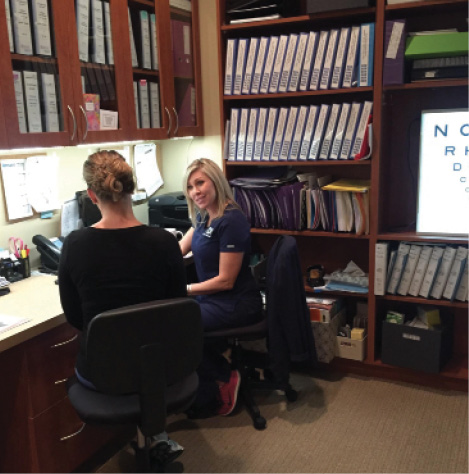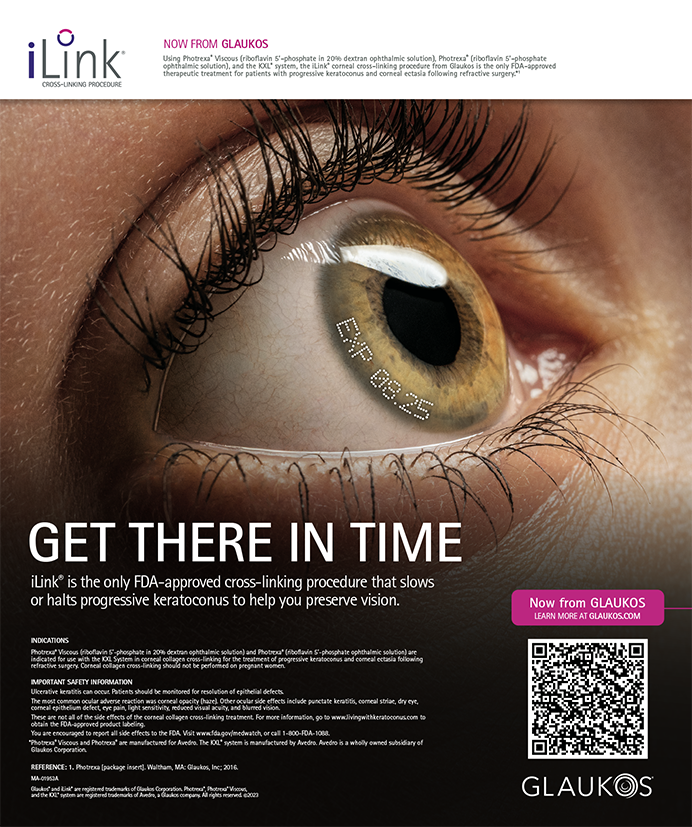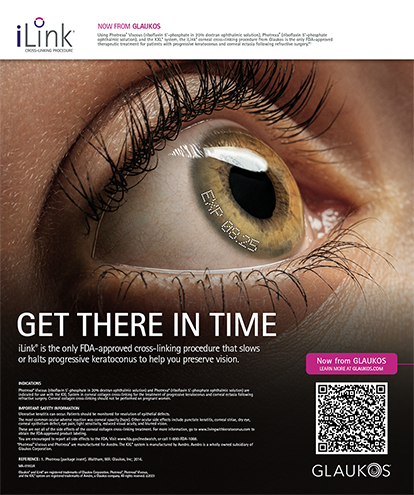
As their years in clinical practice accumulate, physicians realize that they will face a mixture of routine, interesting, and even terrifying cases. A common question patients ask is whether anything on the horizon may help them or their family members with their eye problems. Patients search the Internet, listen to their friends at Mahjong games or bridge, and often hear about or imagine new technologies. They may question whether their physician is on the cutting edge and wonder whether another specialist, local or not, might be able to offer better solutions. Many of these patients are inquisitive by nature. Some struggle with ocular irritation or other side effects from their topical agents. Others are disconcerted by their surgical options.
Participating in research offers you a real opportunity to address these patients’ concerns as well as the satisfaction of moving the field forward, even if only to a small degree. This article discusses the benefits I have reaped from more actively integrating research into my practice, and it provides tips on making that move yourself.
BENEFITS
Patients’ Appreciation
I have found that my patients genuinely appreciate my commitment to advance the field of glaucoma. Even among those who do not qualify for any of my active protocols, there is the hope that they may qualify for future research. More importantly, they feel that I am plugged into the latest technologies that can help them.
Collegial Connection
Participating in clinical research has allowed me to reconnect with colleagues in other parts of the country with whom I worked in the past but might not have seen again if not for study meetings and related emails. Just as importantly, I have made new acquaintances and developed relationships with some of the thought leaders in the field, who have been both available and supportive of my research endeavors.
Staff Motivation
The addition of research to my practice has uplifted my staff. Most practice consultants talk about “team building” as an important part of a successful clinical practice. My staff takes pride in being a part of a clinical research program. The routine day-to-day examinations are now balanced by a sense that true medical progress is being accomplished in their office, while they are doing their jobs and working with their physician.
PREPARATION
How do you prepare your practice to adopt a clinical research program?
1. Ready your staff. Educate them on the importance of the program and what it could mean both for your patients and your practice.
2. Identify your teammates. Determine which staff members will share your commitment to this important goal.
3. Inform patients. Update your website, carefully position posters in your office, and most importantly, talk to your patients about these studies. They will usually inquire about the research themselves if your information is well displayed. Encourage your staff to raise awareness among patients and their families, especially if they ask questions.

Figure. Clinical research requires dedicated space for a research coordinator, the counseling of study subjects, and the accessible storage of binders on each participant.
4. Spread the word. Encourage patients to take brochures and to invite their friends and families to come in for examinations. In other words, take the opportunity to grow your practice while disseminating information on your research.
5. Make room. Plan and dedicate real space to house a research coordinator as well as a quiet area for that staff member to counsel patients. You will also need a dedicated storage area for loose-leaf binders on participants that can be easily reached by staff as well as clinical monitors. My practice has one large room in our clinical area for this purpose (Figure).
STARTUP
Sharing the News
Let your colleagues and even your competitors know about your research program. Explain that their participation will enhance their practices and reputations. Often by agreeing to recruit subjects, doctors can be placed on a fast track for training for the new technologies once they are approved. Some companies will provide certificates of appreciation to those physicians for their offices.
Schedule some dinners or lunches at which to make short presentations to key groups. It is important to say why you believe in the device or medication and always to be credible and humble. Be honest about any limitations that exist, and allow time for questions. Clearly identify the patients who could benefit from inclusion in the study protocol.
Scheduling
Treat subjects like VIPs with “no-wait” appointments. My practice gives all enrolled patients instant access to coordinators to discuss any concerns. Because study subjects usually require more appointments, it is important that they not have to wait as long as patients who are coming in for routine visits yearly or twice yearly. To this end, my practice’s scheduling software identifies study participants as VIPs. Any calls from such patients are routed directly to the study coordinator. I recommend paying for the coordinator’s cell phone and making sure he or she will be readily available to answer calls so as to address patients’ questions or concerns. My practice has a direct phone line for the study coordinator so that patients do not have to go through the normal call center.
Make sure to schedule enough time for study subjects. Show them that their participation is valued by the entire staff, including you. For research projects involving surgical devices, appointments should be scheduled on surgery days that are not harried. Schedule these cases early in the day, if that is when you are most comfortable, or late when you do not have the pressure of many more cases to follow. With new surgical devices and techniques and especially early on, you want to minimize stress on yourself (and the eye), because there is usually a learning curve.
Gratitude
Remember that patients are just as important after a procedure as before it and after a drug study as during it. The research coordinator should plan to spend more time with them than the typical patient, and you should always thank patients personally for coming in and for participating. Ask them if they have any questions, but encourage them to develop a close relationship with the study coordinator, who can answer most questions.
Integrity
Consider incentivizing your staff for recruitment, but avoid inducements. The latter could compromise your integrity; patients should receive the care that is best for them. I do not promise my staff anything, but I surprise them with a gift card, lunch, or bonus for a job well done.
Most importantly, do not participate in research projects if you feel you cannot successfully recruit subjects for them or if you do not believe in the technology or medication. Your excitement at being a part of clinical research should be real, not feigned. Genuine excitement is contagious to your staff and patients.
George R. Reiss, MD
• in private practice, with offices in Glendale and Scottsdale, Arizona
• drreiss@reissmd.com


